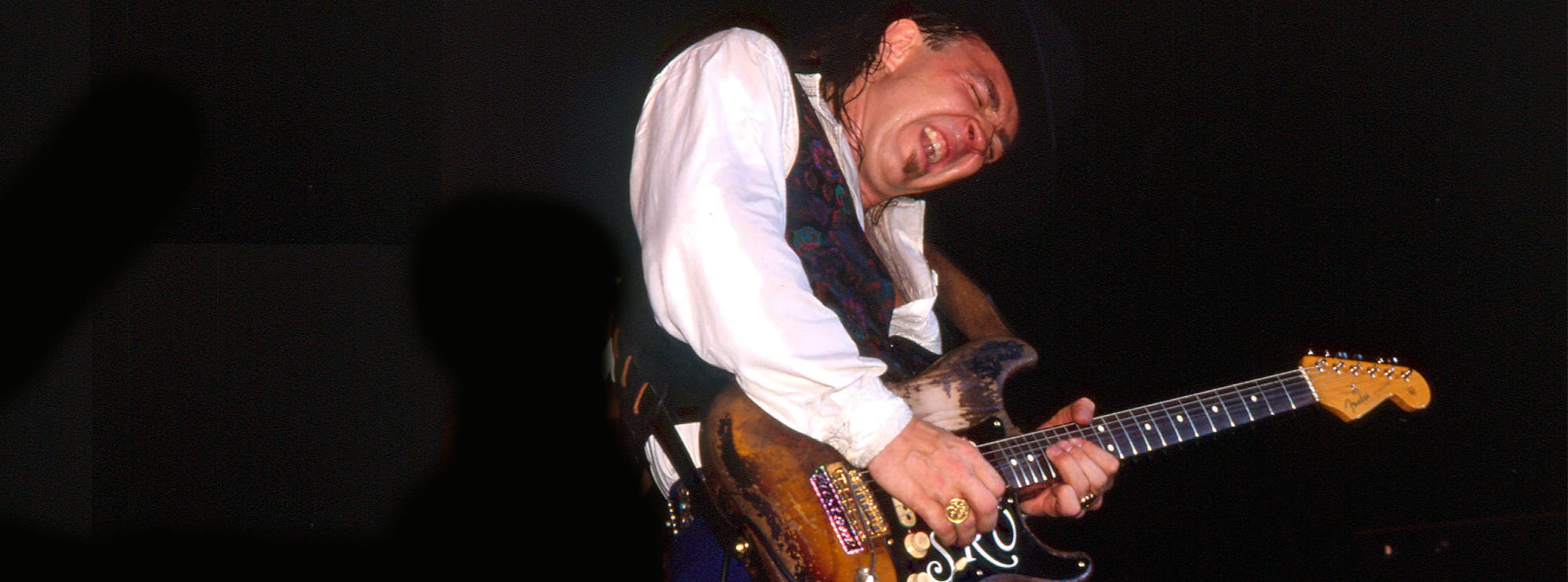Grace by Jeff Buckley
Jeff Buckley’s Grace is not only a landmark song in alternative rock and singer-songwriter circles, but it’s also a goldmine of guitar technique and emotional expression. At LickLibrary.com, our note-for-note guitar lesson on Grace walks you through every nuance of Buckley’s unique playing style, helping you capture both the technical brilliance and soul of this unforgettable track. Whether you're looking to expand your chord vocabulary, refine expressive techniques, or learn to blend melody and rhythm with finesse, this lesson delivers. Richard Shaw breaks down this classic track in this exclusive Lick Library video tutorial.
About the Song and Guitar Work
Grace is the title track from Jeff Buckley’s critically acclaimed 1994 debut album. The song showcases Buckley’s dynamic range as a vocalist and a guitarist, shifting seamlessly between intimate finger-picked passages and soaring, emotionally charged climaxes. The guitar work on Grace is as expressive as his voice, often using alternate tunings and intricate voicings to craft an atmosphere that’s haunting and beautiful.
In our LickLibrary lesson, we break down each section of the song, from the ambient intro to the explosive chorus, offering clear guidance on how to replicate Buckley’s intricate guitar parts.
Guitar Techniques Explored in "Grace"
Finger-Picking
Buckley’s use of finger-picking is central to the vibe of Grace. It allows him to play arpeggiated chords with fluidity and subtle dynamic shifts. This technique benefits players by enhancing finger independence and enabling a more nuanced control of tone and texture, essential for more expressive playing.
Arpeggiated Chord Progressions
A core part of Grace’s arrangement is its use of arpeggiated chord progressions. Rather than strumming chords, Buckley often breaks them into individual notes, creating movement and depth. Mastering this technique strengthens your right-hand accuracy and helps you explore more melodic chordal accompaniment.
Slides
Buckley uses slides throughout the piece to transition between notes and chords smoothly. This adds a vocal-like phrasing to the guitar lines. Learning to slide effectively improves your fretboard fluidity and enhances your ability to connect phrases musically.
Vibrato
One of the hallmarks of Buckley’s expressiveness is his vibrato. Whether subtle or pronounced, it adds emotional weight to sustained notes. Developing this technique helps guitarists add personal flair and emotional depth to their playing.
Hammer-Ons and Pull-Offs
Used frequently in Grace, hammer-ons and pull-offs allow for smooth transitions between notes and enhance legato phrasing. These techniques are crucial for fluid soloing and melodic embellishments.
String Bending
Buckley incorporates tasteful string bending to emulate vocal qualities. Accurate bending is essential for expressive lead playing, helping you hit precise pitch targets and infuse emotion into solos or phrases.
Alternate Picking
For sections requiring speed and accuracy, alternate picking is employed to articulate faster note sequences cleanly. Mastery of this technique develops efficiency and rhythmic consistency across various tempos.
Harmonics
Jeff Buckley uses natural harmonics to add shimmer and atmosphere to his parts. These overtones offer a bell-like texture and add a unique, ethereal quality to your tone. Learning harmonics improves your understanding of touch sensitivity and fretboard positions.
Barre Chords
The song includes the use of barre chords to support its rich harmonic foundation. This foundational technique increases hand strength and unlocks a broader range of chord voicings up the neck.
The Guitarists Behind the Song
Although Grace is a Jeff Buckley solo track, it’s worth noting that much of the guitar work on the album was performed by Buckley himself. His playing style was heavily influenced by a mix of Led Zeppelin, Nusrat Fateh Ali Khan, and jazz legends like Django Reinhardt. Buckley’s ability to blend genres seamlessly resulted in a guitar voice that was both technically rich and emotionally raw.
His approach to the guitar was anything but conventional—embracing alternate tunings, ambient textures, and dynamic shifts to support his vocal storytelling. By studying Buckley’s performance on Grace, guitarists can not only learn new techniques but also develop a deeper sense of musicality and individuality.
Why Learn "Grace"?
Learning Grace will push you to develop your dexterity, chord knowledge, and expressive control. It’s a powerful song for intermediate to advanced guitarists looking to merge technical skill with emotional performance. The combination of delicate finger-style sections and expansive dynamic shifts will challenge your timing, control, and sensitivity.
Our lesson is carefully crafted to walk you through every detail, helping you replicate Jeff’s sound with clarity and authenticity. Whether you're preparing for a performance, expanding your technique library, or simply want to understand one of the most emotive songs of the 90s, this lesson will take you there.
Techniques Used in This Lesson
- Finger-Picking
- Arpeggiated Chord Progressions
- Slides
- Vibrato
- Hammer-Ons
- Pull-Offs
- String Bending
- Alternate Picking
- Harmonics
- Barre Chords
Let Grace inspire your playing—both technically and artistically.

About The Tutor
Tutor Profile
Rich Shaw
Richard is most well known as the guitarist and co-songwriter for UK metal band, Cradle of Filth, from 2014 until 2022. In his time with the band, he co-wrote and performed on the albums ‘Hammer of the Witches’ (2015), ‘Cryptoriana - The Seductiveness of Decay’ (2017), and ‘Existence is Futile’...




